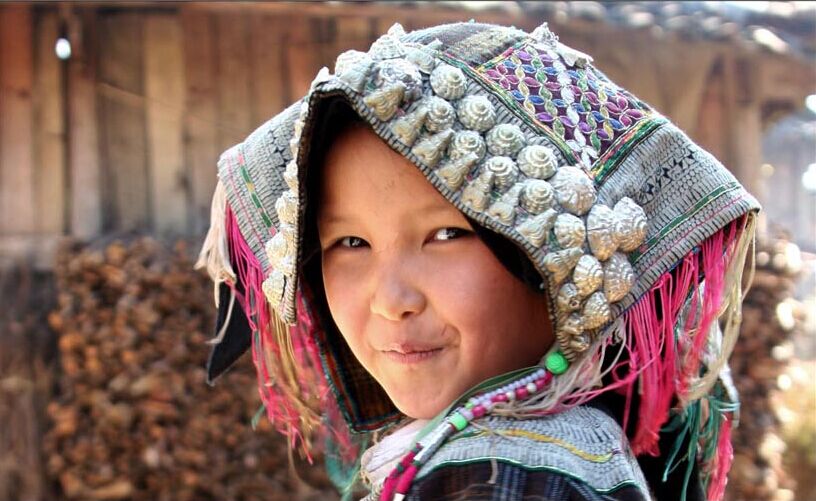

The Kucong ethnic group is one of the poorest minorities in China. Until the 1950s they carried a nomadic primitive existence in the forests of the Ailaoshan Mountains.
"They moved from one place to another in the forest, hunting, collecting wild fruits and raising some food by the slash-and-burn method" "Their main weapon was the bow and arrow. When a boy was four or five, his parents would make a bow for him. He carried one the rest of his life. Even after his death, it was buried with him."
"Their shelters were merely three branches set in the ground and covered with plantain leaves ¡ cooking vessels were the hollow sections of bamboo." "The economic life of the Kucong was based on primitive equalitarianism. They shared the fruits of their labor equally."
Their isolation was such that they were considered "invisible people". Even when they trade to satisfy their necessities of salt, clothes and metals, they didn't let the traders see them. Usually they placed some medicinal grasses or mushrooms from the forest, appreciated by their neighbors, on the edge of the road. When somebody happened to pass, he knew that the Kucong wanted to trade, and that he can take those products from the forest, leaving in the spot a knife, a shirt or a small packet of salt. The Kucong, hidden in the forest, keep watching that the trader in fact, left something.
The basic feeding of the Kucong is corn. They usually cook it with some vegetables and meat, if possible. Sometimes they roast it directly on the fire, cook them inside bamboo tubes or wrapped in banana leaves. They place the corn and some water on the leaf, and cover it with more leaves before they put it on the fire. Vegetables or meat are cooked the same way, without adding water. They hardly add salt, it is very scarce and difficult to get. Once the food is cooked, they place it on banana leaves. They use chopsticks to eat.
The houses of the Kucong are small and narrow, usually are only one meter high. The structure is made of wood or bamboo, with a roof formed with banana leaves or bamboo leaves. As these leaves wither very quickly, it should be changed every one or two months.
Their houses consist of a single room without divisions; the fire is in the center, around which the whole family sleeps, as well as its dogs, hens and pigs. That only room is usually very dark because there are no windows. They don't have blankets. At night they cover themselves with some grasses or banana leaves.
After 1949, some teams were sent to find the Kucong and settle them out of the forest. During some time it was impossible for them to find any track of the 2,500 Kucong. Then they were captured and forced to live in some villages, but they never adapted to the farmers life.
Today, they still keep a semi-nomadic existence, living mainly from hunting and gathering; and government subsidies.
You will only receive emails that you permitted upon submission and your email address will never be shared with any third parties without your express permission.
